The following post was written by Mark Mildren, MD, a PGY-4 Orthopedic Surgery Resident at Loma Linda University who was part of Dr Scott Nelson’s team that visited Hopital Adventiste d’Haiti earlier this month. Mark is planning on pursuing additional fellowship training in total joint replacement surgery upon graduation. Mark’s sense of humor has assumed legendary status amongst his peers and is evident throughout his report below.
Immigrating
We fly from LAX to Miami on a red eye, and get back on the plane from Miami to Port Au Prince (PAP). I slept all of 30 minutes because I was watching the fx series “The Americ–“…I mean, reading …. Greens textbook of hand surgery. There was some confusion at the PAP airport regarding where we were staying, which made for an interesting introduction to a country in which I had no idea what to expect to begin with. More on that later. We make it off the plane and find our bags which come out on a carousel about 1/5th the size of Ontario’s and Dr Nelson had us pack bags…and i mean BAGS! I had two giant duffel bags of medical supplies including some Stimulan (biocomposite), arthroscopy equipment, and a bunch of Nafcillin (antibiotic) which I’ve been told will be confiscated at the airport if found. I’ve tried my best to hide it among the more disposable equipment…do we really need ACL stuff? It’s just going to get bovied by a charmingly handsome joint surgeon in like 20 years anyways. We make it through Customs with only a preliminary search, after seeing 80 boxes of stimulan, they decided not to open up them all). After clearing Customs we proceed to a hallway in which some dude holding a an Adventiste sign says “You! Adventeest! Come with me!” So we did. I generally wouldn’t recommend jumping in a car in Haiti with a random dude that tells you to come with him after he sees you carrying large duffel bags, but hey, what else were we supposed to do. So he leads us to the HAH ambulance. Think of a Datsun with 2 bench seats in the back. And that brings us to the tap taps.
Memorable Exchange
Haiti passport worker (HPW): What’s the address of where you’re staying?
Me: I don’t know, it’s the Adventist hospital.
HPW: I need to know the address, are you with the team that just came through here?
Me: No, we’re a different team.
HPW: Okay, is this your address? (shows me the address of the person in front of me)
Me: No.
HPW: Is this your address? (Shows me the address of the person before that)
Me: No.
HPW: Is this your address? (Showing me another address)>
Me: Ah…yes!
HPW: (Writes down that address) Very good! (Stamps passport).
The Tap Taps
The Haiti public transportation system is comprised primarily of tap taps. They consist of trucks or buses that the backs have been converted into people carriers. One thing I’ll give the Haitians, the efficiency of the tap taps is mind blowing. They will fill the truck bed, have people hanging off the back and on top of the roof. They’re generally brightly painted with some sort of religious wording across the front and back such as “merci Jesus” or “je taime dieu”, which from what I can figure does two things. The first is to differentiate the taptaps from each other. The religious word is the equivalent of which bus line it is. The second is that if you’re riding a taptap, you undoubtably want God on your side because of the traffic. And if you ride the tap taps long enough, statistically speaking, you’re going to end up in our operating room.
The Operating Room
There are 2 operating rooms at the HAH, a big one and a small one. They are lighted by room lights and a stand-alone lamp on wheels which I named ‘Pixar’ because it looks kind of like the light from the Pixar movies. The operating table is a radiolucent table which was hand built by Dr. Nelson and is basically a flat Jackson except without anything but the table. It goes up and down by twisting the pegs on the bottom of it. It raises intraoperatively by standing at the foot of the bed and lifting. The suction is run by a loud motor driven machine, so we just don’t use suction 98% of the time as lap sponges do just fine. The arm boards are literally, arm boards.
What struck me about the operating room there is that it’s cramped, not technologically advanced, we don’t have near the amenities that we do at home, yet somehow, it works just fine. We did spine cases, Taylor spatial frame cases, congenital deformity cases and all went off without a hitch.
That last fact is most likely attributable to the Domina.
The Domina
In ancient Rome, a Dominus was the equivalent of master, or of a person who had sovereignty, or ruled over an area. A domina was the female equivalent. It means something else according to urban dictionary, but let’s not go there. On each Haiti trip, there are two critical participants which both come from the Domincan Republic, they don’t speak a word of English, French or Creole, yet are probably the most important members of the team. They refer to Dr. Nelson as ‘Jefe’ (Spanish for boss) but it’s pretty evident by the afternoon of day #1 that these two ladies are running the show. They are Adrian, and Vieja.
Maria Adrian, MD is an anesthesiologist from Santo Domingo who can do a caudal block in exactly 52 seconds from the break of the prep stick to the withdraw of the needle. She’s kind, patient, works harder than the rest of us, is a great cook and unbelievably efficient in the operating room.
Lucia Hernandez (aka Vieja) is an RN, and functions as a circulator, scrub tech, xray tech, anesthesiologist from time to time, and also can cook a mean pancake. She knows neither me nor Corey speak a word of Spanish, but that doesn’t stop her from talking to and scolding us regularly. And once she has spoken, she has spoken.
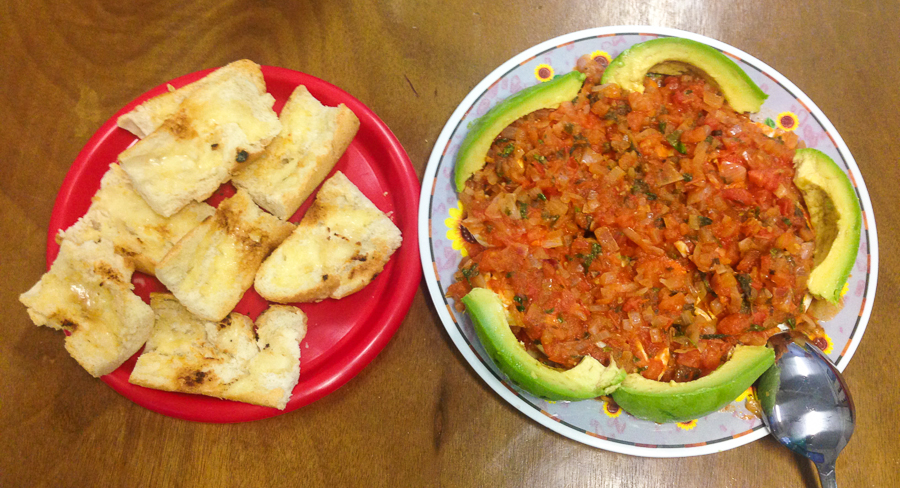
- Another Adrian/Vieja creation: fried plantain on the left and eggs, homemade salsa and avocado on the right
Seeing as how these two ladies were by far the most seasoned of Haiti trip veterans, we should have paid more attention when they refused to go on the hike.
The Hike
I had an isolated radial styloid fracture my intern year that I should have recognized as a harbinger of perilunate pathology, but I just missed it. Likewise, there were warning signs prior to the hike of the pain that was to come. Dear Lord there were signs. The two domina refusing to go. Dr Nelson having running shorts on. The fact that it was called a hike and not an “easy walk”. So we ventured off into the Haitian hills around noon.
It wasn’t too bad at the start. We went to an old dilapidated resort like area where there used to be a pool, a miniature golf course, an amphitheater and a small zoo enclosure complete with alligators, monkeys and birds. Nowadays the cement walkway is cracked and grown over, the entire place is in disrepair. Corey and I catch lizards to pass the time while waiting for the group. From there we venture up the hillside along what passes for a road although it wouldn’t be passable by most American cars. The grade is probably close to 8% over about 3.5 miles. A group of boys join us of for a couple of miles, one is 3 feet tall and carries a rusty machete that’s 2 feet tall. I’m not sure why they walk with us, but they do for a while. It becomes clear that this is not a walk for the faint of heart, the pregnant, or anyone else that isn’t currently training for a marathon. We eventually end up at a Catholic church at the top of a beautiful hill. We rest in the shade, and look out over the beautiful valley. Charles plays angry birds on my phone for 25 minutes while I do what I do best…sleep. The hike was one of the high points of the trip for me, the other was the day that we went to the Cathedral and the local hospital.
The Cathedral
Construction in PAP used to be mostly made of wood, but due to several disastrous fires, wood construction was banned from PAP in 1925 thus most buildings were constructed of weak concrete with no real building code present do to the rampant poverty. This is one of the reasons why the earthquake was especially lethal.
After the conference on bone healing, Francel took us around town and showed us some of the government buildings and sites. One of these was an old cathedral in the center of town. It looked like the roof had completely collapsed as everything above the first level was completely absent. Only large cement slabs hanging precariously from strings of rebar bared testament to the sheer magnitude of the 2010 quake. We made our way to the outside which had been completely sealed up…except for a gate which had an unlocked padlock on it. Help ourselves in? Sure.
At the front of the cathedral two staircases lead up a flight of stairs, and after climbing 20 or so vertical feet, the stairway was waist deep in rubble. Keep going? Of course. We finally came to the top level of the the front of the church 40 feet up, completely covered with rubble.
Seeing this behemoth of a structure being absolutely demolished by the earthquake, it was the first time that the gravity and the strength of the natural disaster was evident to me. It was a life changing experience.
The Downtown Hospital
On the last day of our trip around 8 PM, we drive through a 10 foot high green sliding gate with broken glass that acts like makeshift barbed wire. There is a man puking on the side of the road with an IV in place, his friend just kind of stands by. We park on the side of the main road, and talk to the security guard and he motions us to come inside the ER, but I’m not exactly sure where we’re going because theres no light on in the room in front of us.
It takes a horrifying couple seconds to realize that this IS the ER. The entire ER is out of power. No backup generator, no auxiliary power, nothing. It is probably 2 times the size of LLU’s ER, with cots 3 feet apart in rooms holding 20-30 patients each. Occasionally a family member turns on their phone flashlight to accomplish some task.
There are patients with long leg casts, external fixators, and skin traction. Most are awaiting surgery for what appears to be long bone (femur, tibia, humerus) fractures. Currently no one in Haiti does pelvic trauma surgery. No one.
We then make our way outside to the orthopedic wing which for some reason has power. Some woman adjusts her dress a little bit and pees on the ground in front of us on the sidewalk.
The orthopedic ward consists of 4 rooms each again holding 20-30 patients with 3 feet between cots. There is no air conditioning, only one rotating fan in each room. Patients are again in external fixators, casts or in skin traction. We are informed that if a patient has an external fixator in place, they are not allowed to leave the hospital due to the possibility of losing the hardware, so in the hospital they sit, for weeks. Furthermore, the patients have to pay for everything except for their food. The implants, the surgical gowns, the gloves, the sutures, everything. Considering 80% of Haitians make $2 a day or less, this is no small financial undertaking. Debridement seems to be surgery of choice due to the high infection rate. We meet a young man who started with a simple distal tibia fracture, who now has had most of his tibia removed after being in the hospital for 8 months. What should have been a 60 minute surgery with weight bearing as tolerating the following day for the patient will instead now require a below knee amputation. He smiles when he talks to us and shows us his bible at the bedside.
Dr. Nelson informs me that BKA patients do not do well here.
Our host tells us that typically 3 orthopedic cases are done a day. If you’ve been following along, they have over 100 orthopedic inpatients. 3 cases a day.
We then get to the peds ortho ward. It looks…exactly the same. Kids in ex-fixes for things that would never be externally fixed in the states. I count 5 kids younger than 5 in skin traction. For the life of me, I have no idea what the indication for traction on a 3 year old is. If it’s a femur fracture, it should either be spica casted or flex nailed. We have both at HAH. If it’s a tibia, it should be casted. We have that at HAH. There are reasons why the downtown hospital doesn’t transfer patients to HAH, but when kids are suffering they’re all unacceptable.
At the HAH, we had the supplies, we had the anesthesiologist, we had the OR time to probably clear this entire ward. Watching children suffer while knowing you had the time, the tools and the opportunity to help them is over the past 2 weeks… I’m not sure what the stages of grief are, but I can tell you I went through 3 in that peds ward. Pity. Anger. Resolve.
Exfiltration
I’ve been told that Dr. Nelson is the most prolific traveler, which I sort of dismiss… and then I come across this:
The flight back is altogether uneventful.
Coming back to the US, it takes a certain amount of acting and feigning empathy to fit in. And let’s be honest, most of the issues we have in the US compared with what we’ve witnessed over the past 2 weeks are complete bullcrap. “Oh, you’re son didn’t play pitcher in his game today? That’s awful!” “Starbucks didn’t make your drink right again? Oh man, that sucks.” I watch a grown woman throw a fit at legoland because her 3 year old can’t go on a ride that’s clearly marked ‘4 years and up.’ Sigh.
Final Thoughts
Lizette was already there when we got there. She was 20 years old, and had 3rd degree burns over most of her back, torso and upper extremities. In Haiti there are very few formal gas stations, and if you’re driving a tap tap and run out of gas along the road, walking 20 miles to the next one isn’t really an option. So every so often there’s a roadside stand that sells individual gallons of gasoline, enough to get you back on the road long enough to get to a gas station. Around 8 months ago, Lizette was selling these gallons of gas when some kind of spark ignited the gas behind her giving her the burns she was currently under our care for.
Her hair had started to fall out as she had no appetite for food, her abdomen had started to take on the look of the malnourished. She had been undergoing dressing changes of her still very open wounds for the greater part of her recovery. Dressing changes were no small undertaking, involving scraping off any dead tissue that remained, cleaning the area with betadine, and applying new gauze and Kerlex gauze to the area. It was heartbreakingly painful for the patient.
Lizette passed away quietly last night.
I am convinced that the care that Lizette got at the HAH was far above and beyond that which she would have received at most other hospitals in Haiti, yet it still wasn’t good enough. She was suffering. There is no shortage of people suffering in Haiti. We needed to be able to do more for Lizette. We need to do more for the people and children of Haiti.
“Human suffering anywhere concerns men and women everywhere” Elie Wiesel

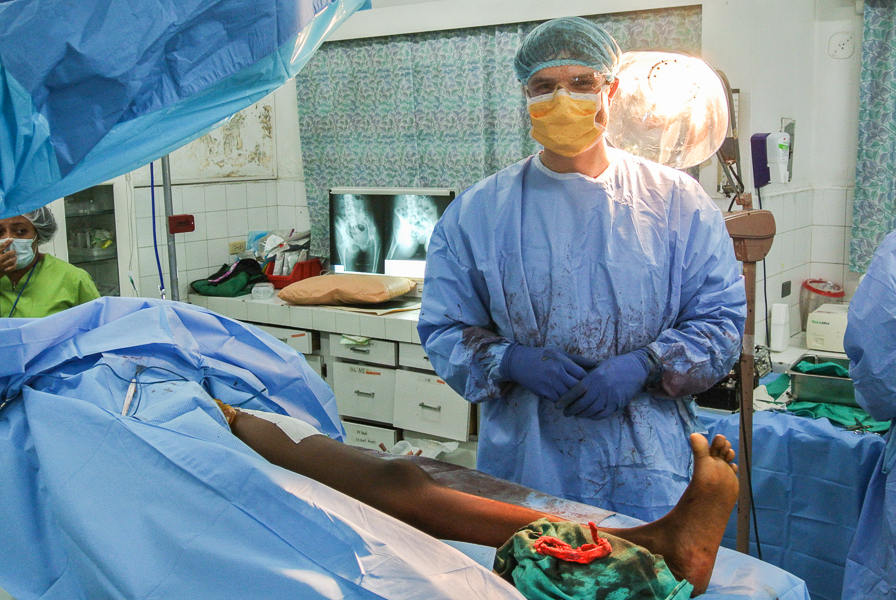
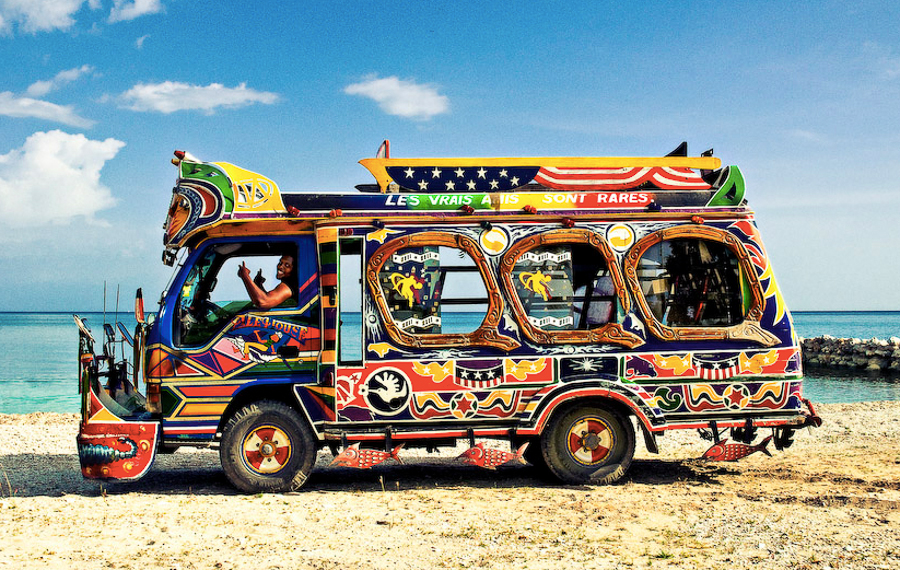
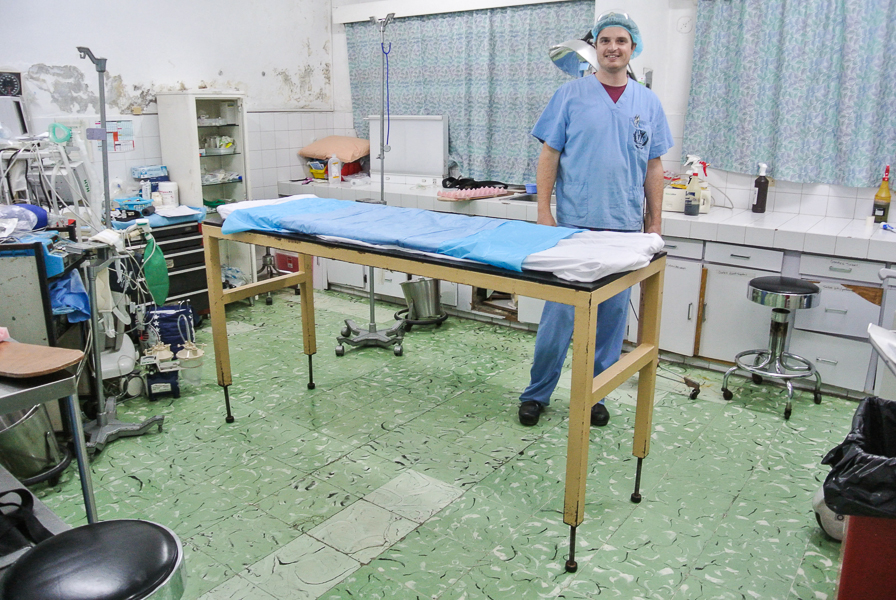
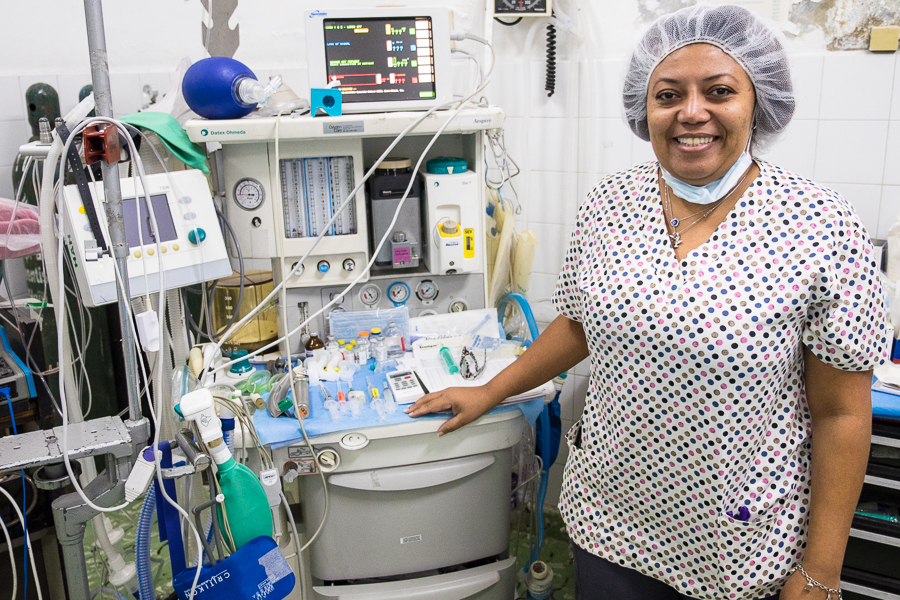

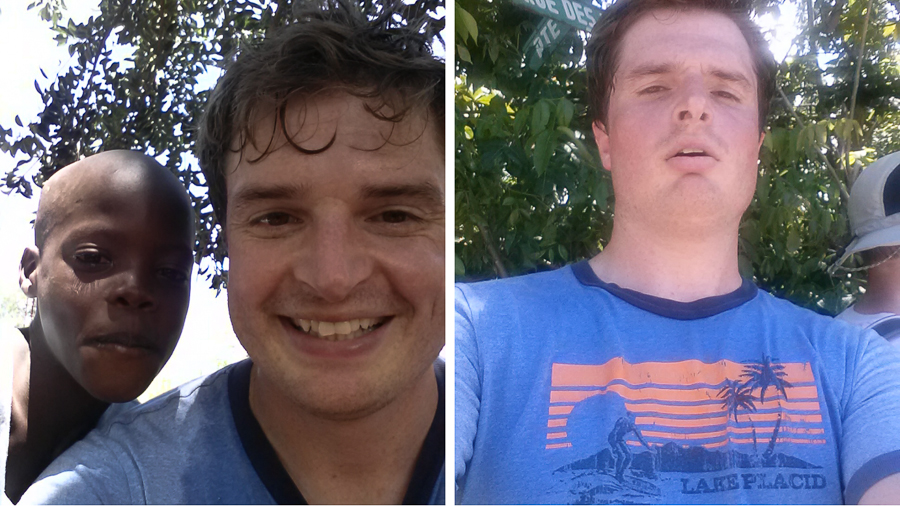

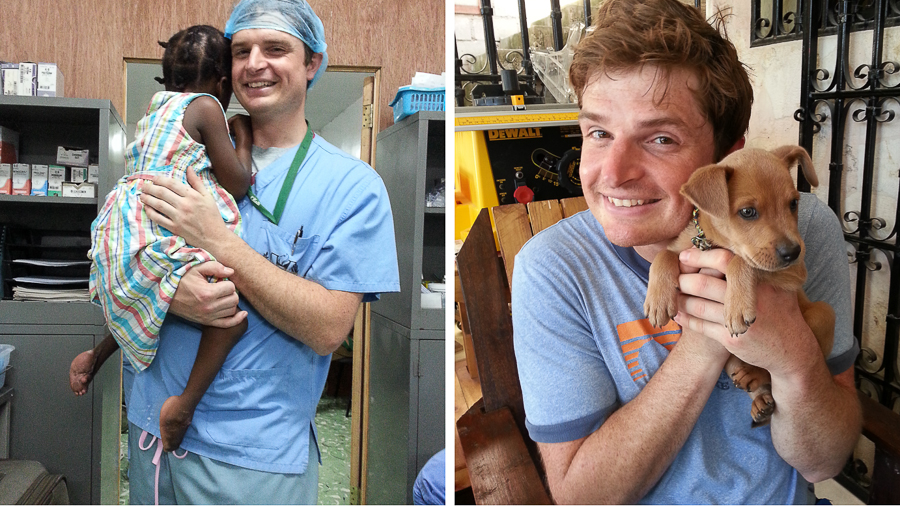


Mark, this is absolutely hilarious and totally true! Thanks for the light-hearted twist on an otherwise depressing description of life in Haiti. Why do I love it there?